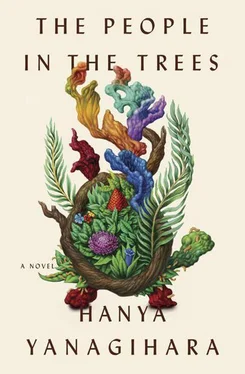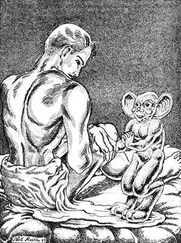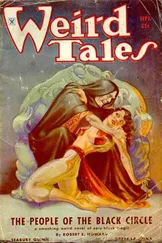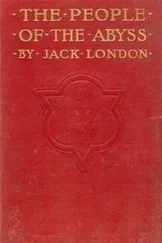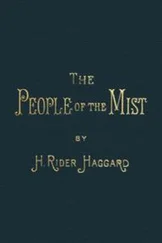But to return to the ceremony. As soon as it was over, I trotted back to Tallent, who was reading by the precious glow of his flashlight over one of his notebooks, and tried quietly to tell him what I’d seen. As I have noted before, I often found it difficult to read Tallent’s face, but this time, for once, it was easy: I saw shock, and disbelief, and disgust, and excitement, and envy, each emotion replacing the next as neatly and wholly as images in a slideshow.
Unfortunately, Esme awoke midway through my recitation and I was made to recount the entire incident again. Not surprisingly, she did not receive the information well, and essentially accused me of lying, her voice rising higher and higher until Tallent was forced to tell her to compose herself.
“I just don’t believe it,” she finally hissed (we were all speaking in whispers so as not to wake the dreamers). “There’s been no indication of this type of behavior, there’s been no mistreatment of the children, there’s been—”
“But that’s just it,” I told her. “It’s not mistreatment. The boy seemed completely fine afterward.”
She scoffed. “You’re going to tell me that a young boy who’s just been raped by nine men—”
“You’re not listening, goddammit,” I snapped back at her. “He wasn’t being raped. His parents were right there. It wasn’t a violent occasion.”
“It’s by its very nature violent, Norton! I don’t care if the parents were there or not!”
Anyway, it was a very tedious conversation, and round and round it went, and it might have gone on for much longer if Tallent, who had been watching us, had not put an end to it by promising he would talk to the village chief about it the next day.
And he did. According to the chief, what I had witnessed was a ritual called a’ina’ina, and it was bestowed upon each boy when he reached maku o’ana. The point of the ceremony was to instruct boys in the ways of lovemaking, and who better to teach a boy than another man? And what better way to help a boy relieve some of his preadolescent aggression and anxiety than to show him an outlet toward manhood? Girls, being less sexually charged, had no equivalent ritual, but they were thought to need less sexual instruction than the boys. The chief also invited us to witness the next a’ina’ina, which would take place in three nights. It was highly unusual, the chief said, to have two boys whose eighth o’anas were so close together, but that was what had happened this year.
I found the chief’s explanation of a’ina’ina perfectly reasonable. Esme, of course, did not. I couldn’t tell what Tallent thought. But three nights later we were all back at the ninth hut, watching as this time a different boy, a little more cushioned and somehow not as attractively alert as the boy I’d seen, was greeted by the chief at the entryway and taken in for his initiation. And even though everything was exactly as I’d described it — the humming, the chanting, the burning fire, the boy’s acquiescence, the wreath of ferns — Esme adamantly refused to speak of it later. She marched back to our mats like a teenager in a fury, and if there had been a structure with a door available, she would have stomped into it and slammed it shut. As it was, she flung herself down and rolled onto her side and pretended to be asleep, even though she woke me twice in the night with her muffled sobbing.
Years later, when all of our lives were very different, Esme published a book about her time on Ivu’ivu 42in which she neglected entirely to mention the ritual. I wanted to ask her why she hadn’t addressed it at all, and even started a letter to her, but I was of course by that point very occupied with more urgent matters and so never completed it. However, I considered her omission the worst sort of intellectual hypocrisy: when documenting a culture, one cannot simply leave out details that one finds distasteful or shocking or that do not fit into the tidy narrative one has constructed. But then, later still, I wondered if her reaction had not been born primarily from jealousy. After all, as far as such events went, the a’ina’ina was an anthropological treasure, and it had been I, not she, who had observed it first. That certainly was something I could understand and even sympathize with, especially considering the events that would follow, which would render her presence increasingly irrelevant.
As for me, I did not feel it was my position to pass judgment on the ritual. I had certainly found it a surprise, even a shock, but I cannot deny that it made me rethink certain assumptions I’d always had about childhood, and sex in general, and how there was no single correct attitude to either. This may sound very naive, but I suppose I had thought until that point that there were a few absolutes in the world — that certain behaviors or acts, like murder, were inherently wrong, and others inherently correct. But my time on Ivu’ivu taught me that all ethics or morals are culturally relative. And Esme’s reaction taught me that while cultural relativism is an easy concept to process intellectually, it is not, for many, an easy one to remember. 43
There was another unseen and not entirely pleasant consequence of bearing witness to these activities, which was that my dreams at night began increasingly to turn to Tallent. I am slightly ashamed to admit this, for it sounds so childish, but I was, after all, barely more than a child myself at the time. In the mornings I could not remember the specifics, only that he was in them and that I was happy, and that the days that followed often felt unbearably dreary and sad, a landscape bled of contentment, and I began to think of them as something to be withstood before I could return to the cosseting blank darkness of night.
III.
Although it may seem otherwise, I do not mean to suggest that I, or any of us, had lost interest in the dreamers and the particular quandary they presented. I also don’t want to give the impression that my haunts through the village were at their expense. Indeed, a significant amount of time was spent bathing them, feeding them, observing them, and interviewing them, all of which rapidly grew very dull. My disenchantment with them was partly because I now had something new — the village and its inhabitants — demanding my attention, but also partly because the dreamers were, by their nature and limitations, boring specimens to work with. They were in fact not dissimilar to those dim white mice I had spent all those mornings killing: necessary, but not engaging in the least. All of us knew there was something about them that was singular and important, but none of us could determine what that thing was, or even how to frame the question that might lead us to an answer. Here, however, I probably had an advantage over Esme and Tallent: I knew, simply knew, that there was some connection between the dreamers’ advanced age and the youth of the villagers, between the villagers’ refusal to see the dreamers and the dreamers’ longing for the village, even as they refused to contemplate entering it; indeed, they would not even face in its direction and preferred to look into the gloom of the forest at all times. But I couldn’t figure out what that connection was. It was always there, a sprite crouched in a sooty corner, beckoning me at the most unlikely, inconvenient times and then sprinting away, cackling, as soon as I began to creep toward it.
In the meantime, the dreamers remained mostly the same. We could get little more out of them about their lives than we already knew: Vanu’s arrival, Ika’ana’s memory of Ka Weha. We tried to interview them about their lives in the village and their lives in the forest, but their answers were patchy and vague: in Ika’ana’s case because he seemed to have no memory of it; in Mua’s case because of something else — a hesitation, a circumspection.
Читать дальше
